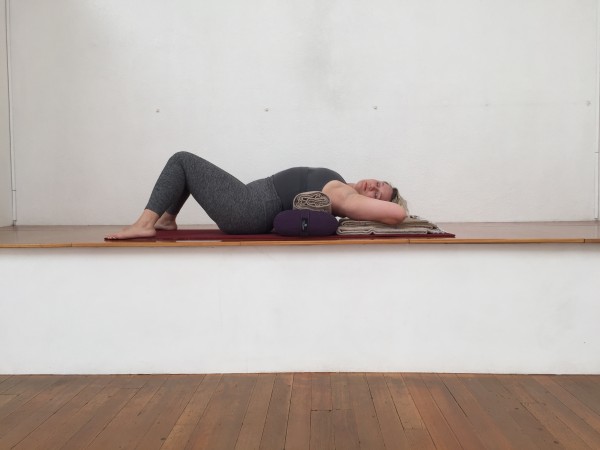The Joys of Restorative Yoga – aka Naptime For Grown-Ups
May 13, 2016
Today’s blog comes to you from Santa Barbara yogini and Restorative Yoga teacher, Simone Duffet. This content was originally created for Drishti Yoga and was cross-posted with permission. For the original post, see here.
There are plenty of yoga students that would come to my class and think, “Really, did I just pay for this? We aren’t doing anything.” I couldn’t blame them for this, because they aren’t totally wrong. There is a whole lot of doing nothing during the therapeutic and restorative yoga class I teach. I mean, we sometimes practice only three poses in an hour and a half! That’s why I lovingly refer to my class as “Nap-time for grown-ups.” That nothing, however, is deceptively rich.
Restorative yoga gives you many of the same benefits that more mainstream yoga does, like flexibility of the spine, positive effects on the hormone levels, and strengthening the immune system. It stimulates and soothes the organs and promotes mindfulness. It helps to balance the effects of chronic stress, in part by activating the Parasympathetic Nervous System (PNS), and inhibiting the Sympathetic Nervous System (SNS).
There is a deep well of peace and stillness inside each of us that is available to us if we choose to access it. Meditative practices like restorative yoga give us an opportunity to tap into that well. The more often we tap in, the easier it becomes to do so.
There is a direct physiological benefit of tapping in to that well. When you practice slowing down and resting deeply regularly, you can train your nervous system to switch more readily into the “rest and digest,” or Parasympathetic, mode. Your Autonomic Nervous system is divided into two subsystems that work in opposition, and it is vital that your body can switch back and forth easily.

These are the Sympathetic Nervous System, (SNS), and the Parasympathetic Nervous System, (PNS). The SNS is associated with stress, the “fight or flight” reactions, whereas the PNS is associated with long-term goals, like rebuilding energy stores, healing, or “rest and digest.” Both the SNS and PNS have their own functions, feeling tones, and physiologies. This is pretty overly simplified, but suffice to say, it is the PNS that most relaxation exercises are hoping to stimulate.
When the body is supported by props and put in restful postures you create a stable base for relaxation and sense of security. With props your body can surrender more deeply into the pose and, in poses that are more physically challenging for your body, you can go further, opening more.
Best of all, it is accessible to everyone. No one is limited by age, ability, experience, or even health. Especially during times of healing, restorative yoga can be incorporated into your practice. This means it will always be sustainable. Like a meditation practice, if you learn to love it, you will be able to have it with you your whole life. Very reassuring.
For more from Simone, check out her Restorative Yoga class at the Santa Barbara Yoga Center.


